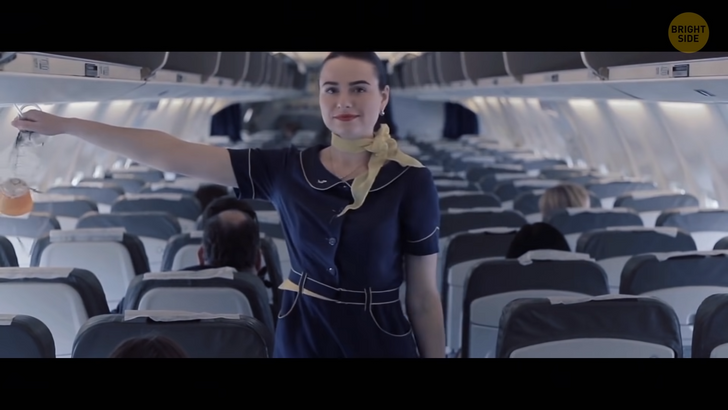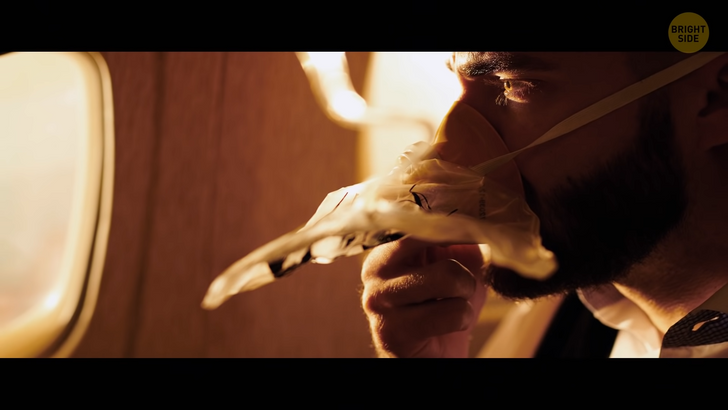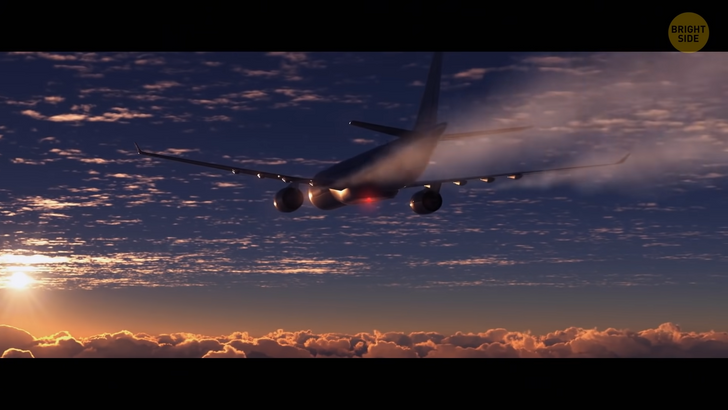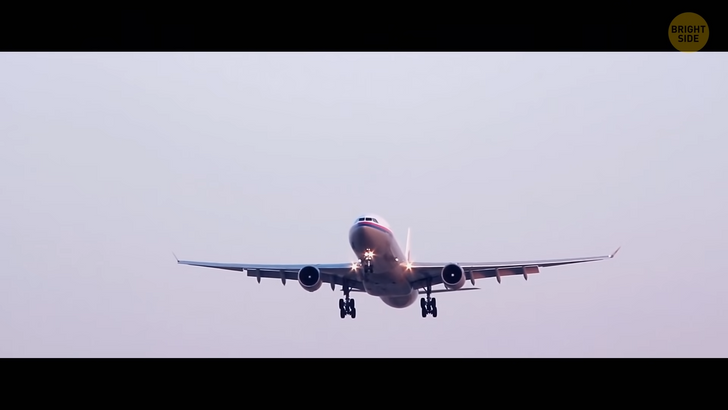My Sister-in-Law Secretly Performed a DNA Test on My Toddler

You take your seat on the plane and look around. It’s a large aircraft, spacious and new. You look up — something draws your attention to that small compartment above your seat that contains your oxygen mask. Come to think of it, you’ve only ever seen it during in-flight safety demonstrations.
“Ah, maybe it’s for the better,” you think and relax into your seat. Screaming and powerful jerks are what wakes you up. One of the flight attendants is saying something in an urgent voice, but, still disoriented after your nap, you can’t catch the meaning of the announcement.

And then, right in front of your face, you see an oxygen mask! Uh-oh... You place the mask over your face — you DID pay attention to the safety demonstration, huh? Then you grip the armrests and close your eyes, trying to calm down — however impossible it sounds. But do you know what’s going on inside your oxygen mask? Well, let’s talk about it!
An oxygen mask deploys automatically in case of loss of cabin pressure. It might happen for several reasons, for example, some problems with the fuselage or malfunctioning of the valves pumping air into the plane. But most of these incidents aren’t life-threatening — if the masks deploy as they are supposed to. The problem with the air above 10,000 ft [(3,050 m)] is that it contains too little oxygen for people to breathe. That’s why once a plane rises higher than that altitude, the pressurization system springs into action.
Its main task is to create the same breathable conditions as at the height of 5,000-8,000 feet. [(1,500-2,500 m)] If, for some reason, this system fails, oxygen masks drop. If this happens, it’s crucial to put your mask on within the first 18 seconds after it deploys. If you procrastinate, you’ll feel the effects of low oxygen levels in your blood very fast. You’ll become drowsy. And if you keep ignoring your oxygen mask, you’re likely to pass out.

Anyway, you acted fast and can now breathe freely. But for how long? And is it really oxygen that you inhale? First of all, you notice with horror that your mask doesn’t inflate! No worries, it shouldn’t. It’s supposed to rise and fall along with your breathing. So, everything functions perfectly fine, even if it might seem it’s not working.
Now, hold on to your hats, here’s shocking news: there isn’t actually any oxygen in the mask. Instead of the gas, there are several chemicals. When they combine, they mimic good old breathable oxygen. The main reason for using the chemicals is safety issues. This mixture is way less combustible than oxygen tanks.
Anyway, the chemical reaction that is happening in a deployed oxygen mask is the reason why you might smell something burning when putting it on. That’s the chemicals mixing and forming the new substance. In case of a real fire, your mask simply won’t drop. The chemicals inside can, unfortunately, fuel the flames.
Oh, and don’t forget that in your mask, there’s only enough oxygen for 20 minutes at the most. This time is usually enough for the plane to get down to the necessary altitude. When the chemicals in the mask are all used up, the mask stops the flow of air. But by that time, you’re already at an altitude where you can breathe without additional help. By the way, oxygen masks are used not too often.

On U.S. airlines, it’s only been 2,800 cases over a period of 40 years! In other words, additional oxygen was necessary a mere flight hours. The average cruising altitude of a commercial aircraft is 31,000 to 38,000 ft. [(9,500-11,500 m)] Why can’t planes climb higher than that? Well, it’s not that they CAN’T. They simply DON’T. Because pilots can’t count that high. No not really, it’s because if they did go higher, there would be serious safety issues.
First of all, if a plane is flying very high, it takes much more time to get back to a safe altitude. During an emergency, like rapid decompression, when every second counts, it can become a serious issue. Plus, while traveling at altitudes higher than 38,000 ft, planes can’t communicate with the ground services as well as they do when flying lower.
At lower altitudes, planes can also partially rely on wind. And if they rise too high, without any additional support, they waste too much fuel to stay in the air. Once a plane climbs too high, the air can’t provide enough lift to keep the machine going. The lift is created by the difference in air pressure. But at high altitudes, this difference is simply not enough.

Air may not look like something real because it’s nothing material, like metal or plastic. And still, it’s one of the things that keeps planes aloft. Let’s say a plane is heading for space. Oooh! It has large, cleverly-designed wings and super-powerful engines. But the higher it goes, the thinner the air becomes — until there’s hardly any air left.
And then nothing can support the plane and help it go further if there is a near-vacuum around. (That’s why we still need rockets to get to space.) But back to your flight. The plane is now at a safe altitude, and you don’t need your oxygen mask anymore. But one interesting detail gets you thinking. Throughout the entire ordeal, you didn’t hear the pilots mention the details of the emergency even once!
That’s because pilots are always very careful with what and how they say. They’ll never announce anything dramatic, like “fail” or “malfunction.” They downplay any existing problem by replacing “zero visibility” with “some fog,” “something is broken” with “some technical problems,” and so on. It’s called “positive scripting.”
“Hey, looks like we’ve just jettisoned both our wings — well, that should help us save on weight.” Flight attendants are supposed to follow it as well. But passengers perceive pilots’ announcements as more important and, statistically, listen to them attentively 100% of the time. At the same time, if there’s a really serious problem you need to be prepared for, you’ll definitely get informed.

Now, picture this: you enter the passenger cabin of a spacious airplane. And as soon as you find your seat, you realize that for the next several hours, you’re going to be crammed in the middle seat between two other human beings. But oh, look — there is a perfectly empty row of seats at the end of the plane! Time to switch places! But what you need to keep in mind is that by doing so, you might endanger the safety of the whole plane! Really.
First of all, you aren’t likely to be the only person willing to change your seat. But if a couple of passengers do it, they might upset the balance of the aircraft. And since most planes are extremely sensitive to any changes in their center of gravity, it can lead to very unpleasant consequences. Positive scripting again. Pilots must know the distribution of weight on the plane during the take-off to make special calculations. If these calculations are wrong, there are chances that the aircraft will crash once it tries to leave the ground.
But even if the worst doesn’t happen, pilots can still have serious problems with controlling the plane. For example, one pilot almost didn’t manage to turn the plane after just 4 passengers had left their assigned seats and moved to the front of the cabin. The situation was critical because the runway was unusually short. And if something had gone wrong, the plane wouldn’t have been able to stop.

It can also mess with the plane’s balance if the airport staff load baggage incorrectly, for example, in the rear compartment instead of the front one. In this case, the machine can pitch up too fast, and the pilot will have a hard time trying not to lose speed. It doesn’t mean that you can’t change your seat on the plane at all. But before doing that, ask a cabin crew member if you’re allowed to.
Still shaky after the fright you’ve just had, you try to distract yourself. Luckily, you have a window seat and can watch the clouds and... Wait! You suddenly notice the way the airplane wings are flexing. They seem to flap so much that you get worried they’re going to fall off! No worries!
The wings are supposed to flex. They’re designed this way. If they were stiff, they would snap off as soon as the lightest turbulence hit the plane. By the way, pilots recommend that nervous flyers who are afraid of turbulence should pick seats in the middle of the cabin. Turbulence affects the front and rear parts of the cabin the most. The middle, over-the-wings section doesn’t shake that much.

Maybe you’ll feel a bit calmer if you know that airplanes can safely operate with one engine — even during take-off and landing! And both engines failing at the same time is almost unheard of. But even if something like this happens, a plane won’t drop from the sky like a rock. If both engines stop working at a high altitude, pilots still have at least 20 minutes to find a place to land.
A plane can land even if its wheels are broken! It does sound scary, but if the landing gear gets stuck, pilots just skid the plane’s belly down on the runway. If everything’s done correctly, such landings are more or less safe. “Ladies and gentlemen, we’re about to land at our destination — more or less...”











